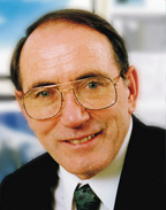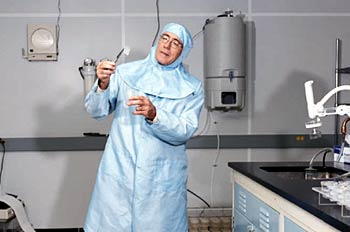| GASSAWAY MAN PREDICTED SNOW MELT ON MT. KILIMANJARO
An earth sciences professor at Ohio State University, a native of Gassaway, has been named to receive a National Medal of Science from the White House.
Lonnie Thompson, a glaciologist, received the medal for his work providing evidence of global climate change.
Thompson is one of eight researchers who will receive the award this summer during a White House ceremony.
 Thompson has worked for nearly three decades, leading more than 50 research expeditions to ice caps and glaciers on five continents. Thompson has worked for nearly three decades, leading more than 50 research expeditions to ice caps and glaciers on five continents.
His work has included retrieving ice cores, some dating back more than 750,000 years.
Refrigerated storage rooms at Ohio State house more than four miles of the 4-inch-thick cores.
Thompson and his colleagues study dust, chlorine, sulfate and oxygen to determine past droughts, monsoons, volcanic eruptions and temperature records.
Thompson says his work shows that the last 50 years marked the warmest period in recorded history.
"The loss of our glaciers is the most visible evidence of global warming we have...They store the history of many of the climate's most crucial variables that affect the earth's systems, and their loss is easily apparent to anyone who might take notice," he said.
In 2001, Thompson predicted the snows of Mount Kilimanjaro in Tanzania would disappear within the next 20 years.
They have.
Thompson has also found ancient plants exposed for the first time in 5,000 years at the Quelccaya ice cap in the Andes in Peru, the largest ice sheet in the tropics.
Among Thompson's other awards is the 2002 Heineken Prize for Environmental Science from the Royal Netherlands Academy of Arts and Sciences and the 2002 Vega Medal from the Swedish Society for Anthropology and Geography.
In 2005, he was elected to the National Academy of Sciences and served as an adviser to former Vice President Al Gore for the 2006 documentary "An Inconvenient Truth."
"His work is the most serious warning cry yet that it is time to change our ways, and protect our children's future," Gore said.

FROZEN ASSETS - Lonnie Thompson in his lab's "clean room," May 2004. His collection includes four miles [6.4 kilometers] of rare ice cores
Photo courtesy of www.nationalgeographic.com
| 


